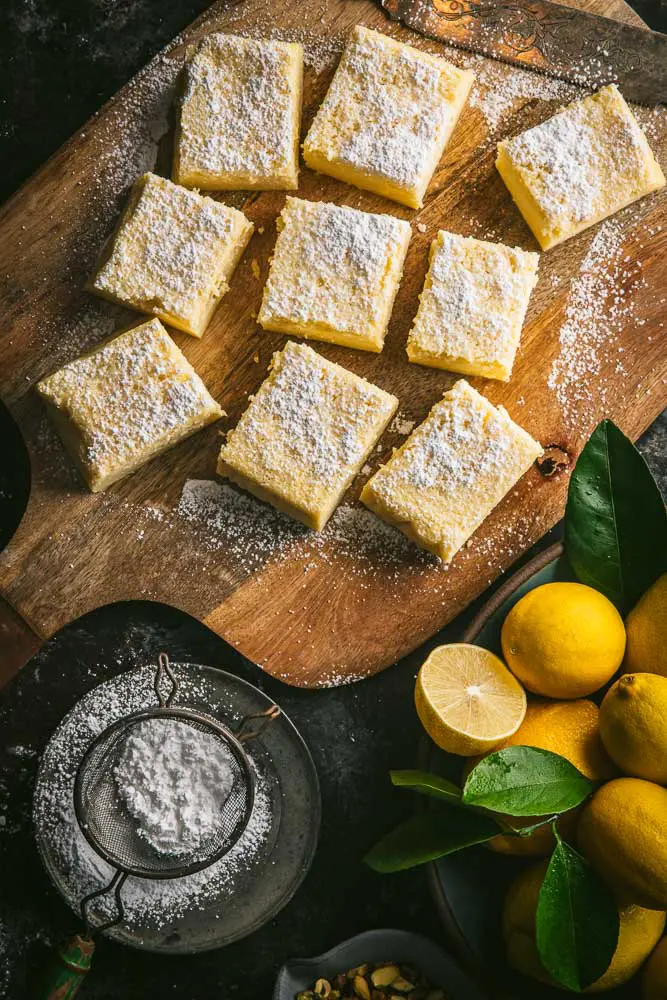
Running a recipe blog and having to compete with literally the rest of the cookery internet can feel at times like having an SEO scold for a neighbor. “I see you forgot to name your recipe Amazing Best Ever Lemon Custard Cake“, she’ll say, sucking her teeth and peering over the fenceline. “Mr Jones from No. 74 has very concise paragraphs. Very concise. Brave of you to make yours so long and flowing. We’re going to have rain.”
Okay, yes, we’ve called a few recipes (and a book) “The Ultimate … something or other” (#NotOurChoice). And perhaps it occasionally works, damn you, SEO. But in this case, “Magic” isn’t meant to suggest jazz hands and glitter vests, pennies from heaven or illusions, Michael.
It refers to the fact that, once baked, this single batter transforms into a lemon custard cake with distinct layers — A light and fluffy top, a soft and custardy center, and a more solid custard on the bottom. See? Magic!
video directions
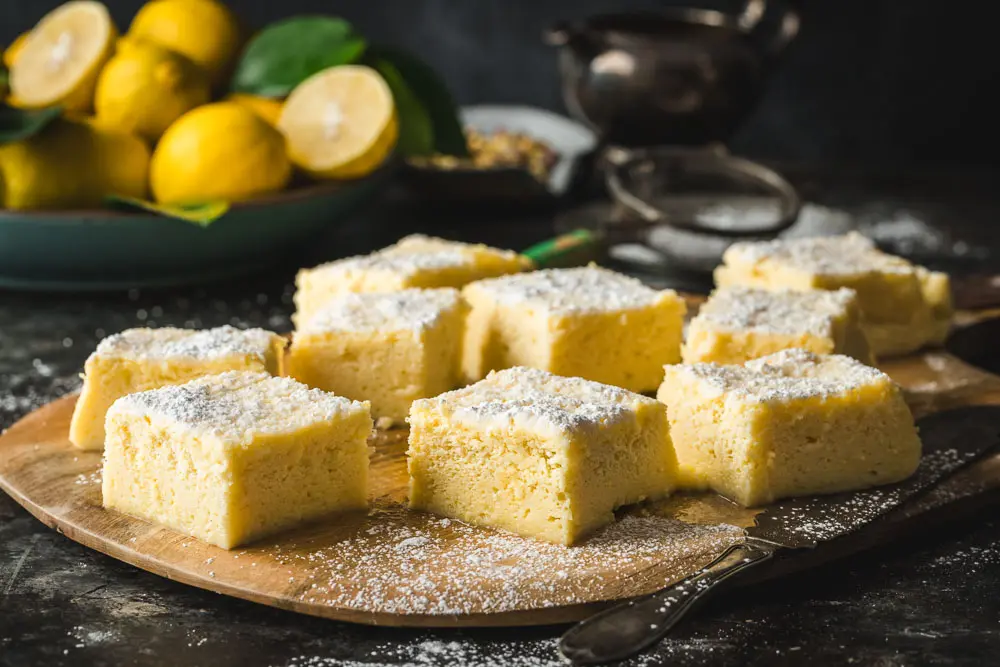
When life gives us lemons, we do a happy dance. We both love anything lemon, as our recipe archives reveal: Lemon Curd, Lemon Bars, Blueberry-Lemon Curd, Strawberry Lemon Tiramisu, Lemon and Black Sesame Buttermilk Poundcake … and that’s just a few of the sweet recipes.
A couple of years ago Matt gifted me three small potted citrus trees: mandarin, lime and Meyer lemon. The first couple of years the trees didn’t fruit, but this winter the lemon tree went bananas (sorry, that’s a rather apples to oranges comparison). We must have had 20 lemons on this damn thing. Meyer lemons tend to be a little bit sweeter than Lisbon lemons (the variety most often found in grocery stores), but either will work. Ours were actually pretty sour, so the flavor was probably quite similar.
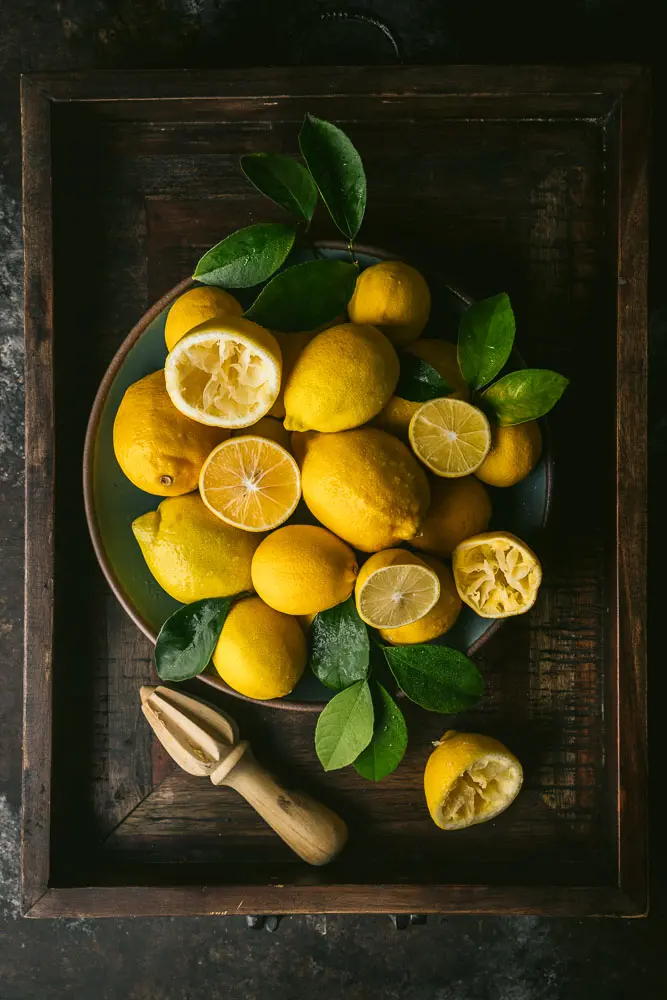
The process
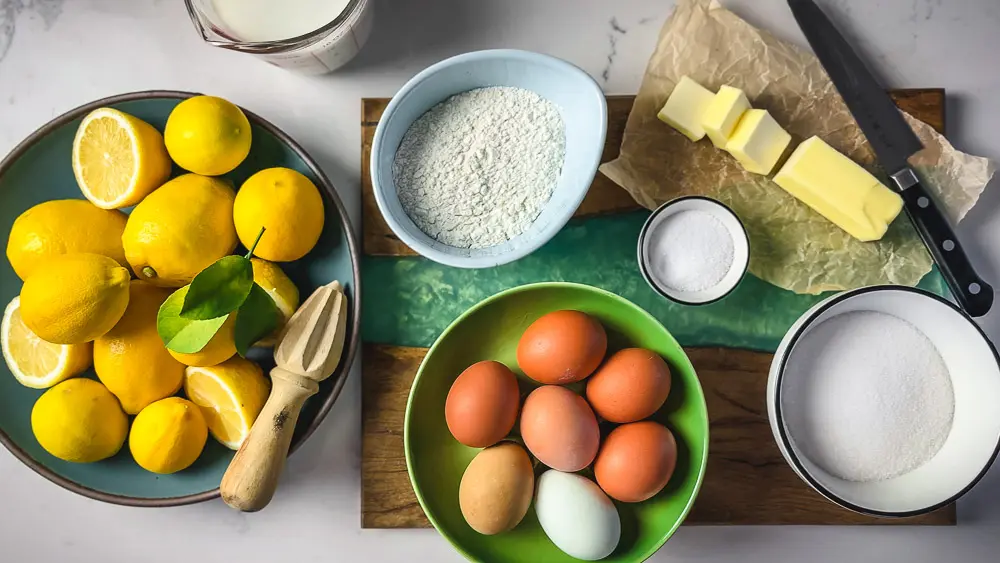
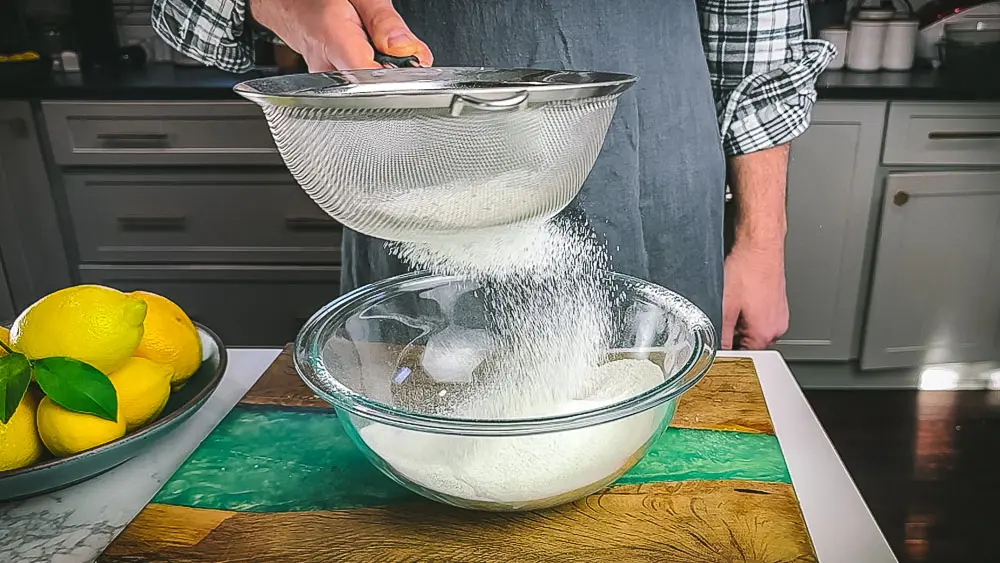
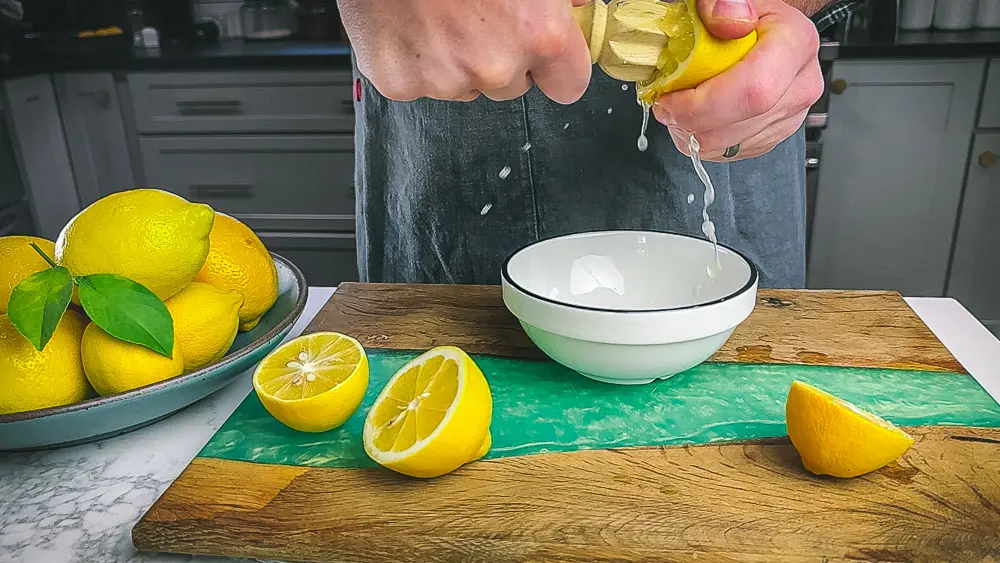
Lemon custard cake uses ingredients that you probably already have in your pantry. Since there is no leavening other than the whipped eggs, it’s important to keep the batter as light and aerated as possible. Sifting the flour also helps to keep the batter light.
Start by lining an 8×8-inch baking pan with parchment paper, and either spray with a little no-stick baking oil or rub a little soft butter around the sides. This will make it much easier to remove the cake once it’s baked. Heat the oven to 325ºF (165ºC) and set a rack in the middle.
Next, separate the eggs, adding the whites to the bowl of a stand mixer fitted with the whisk attachment (a handheld beater works just as well). Make sure not to get any yolk mixed in with the egg whites. The fat in the yolk can prevent the whites from whipping properly (a few little drops are fine, but if there’s too much, it won’t work). Adding a tiny amount of cream of tartar also helps to stabilize the whites, and helps give them volume.
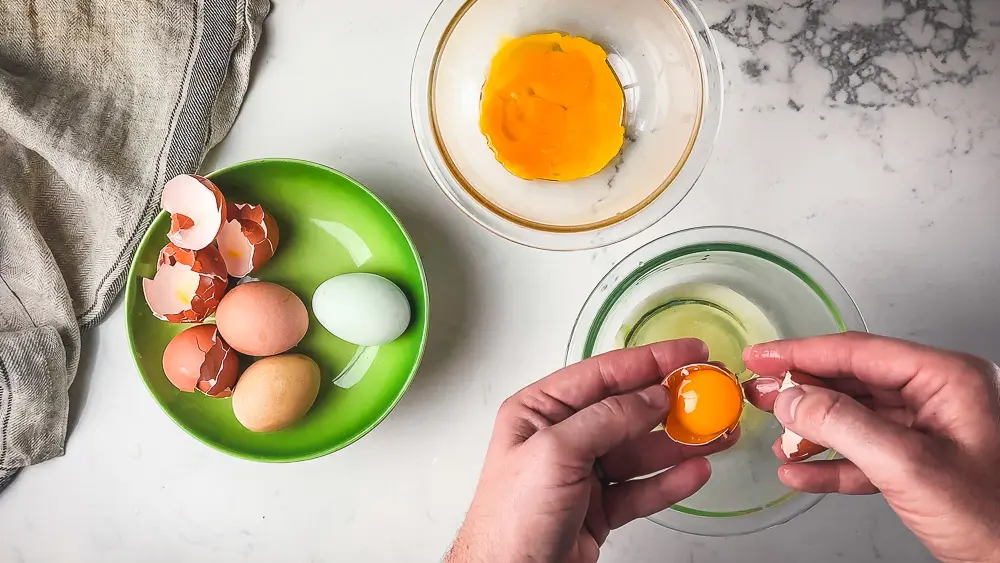

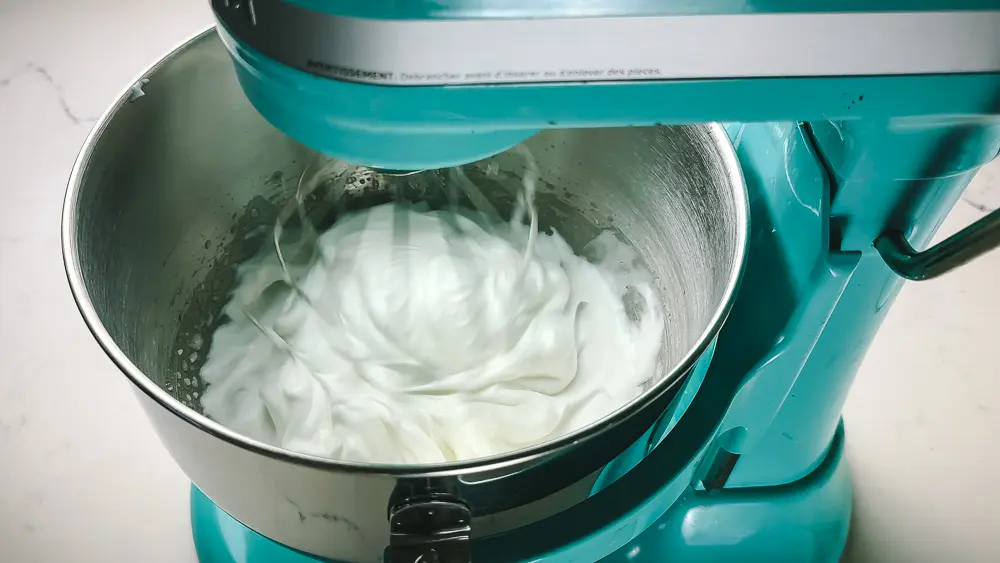
If you have two mixing bowls, you can leave the whites in one and use the other for the yolks. Alternatively, transfer the whites to another bowl and add the yolks to the mixing bowl. (Mixing the whites first, then the yolks, means that you don’t have to wash the bowl inbetween). Whisk the yolks on medium-high until they become foamy. With the mixer running, drizzle in the sugar until the yolks thicken and lighten in color. Pour in the salt, melted butter and vanilla extract, and continue beating for another minute or two until they’re well incorporated.
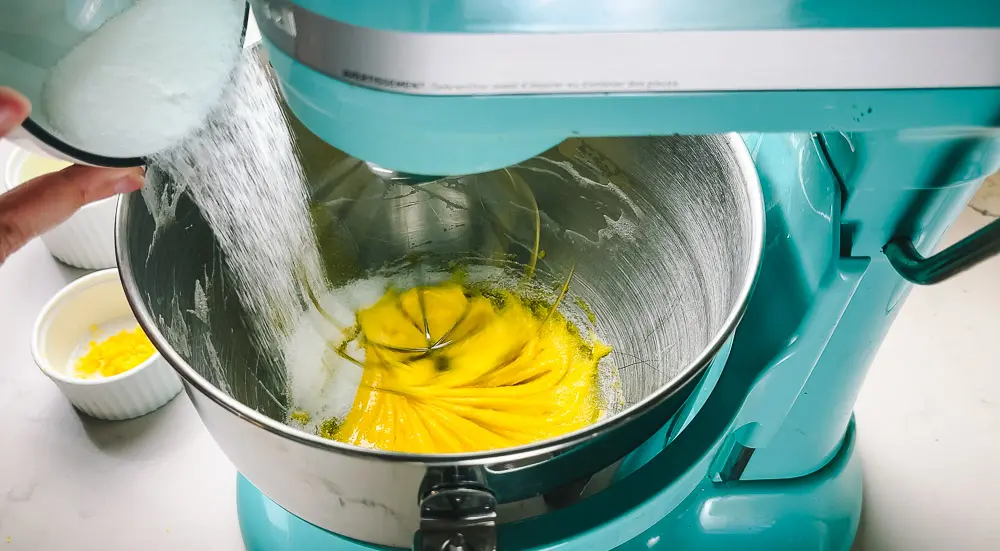
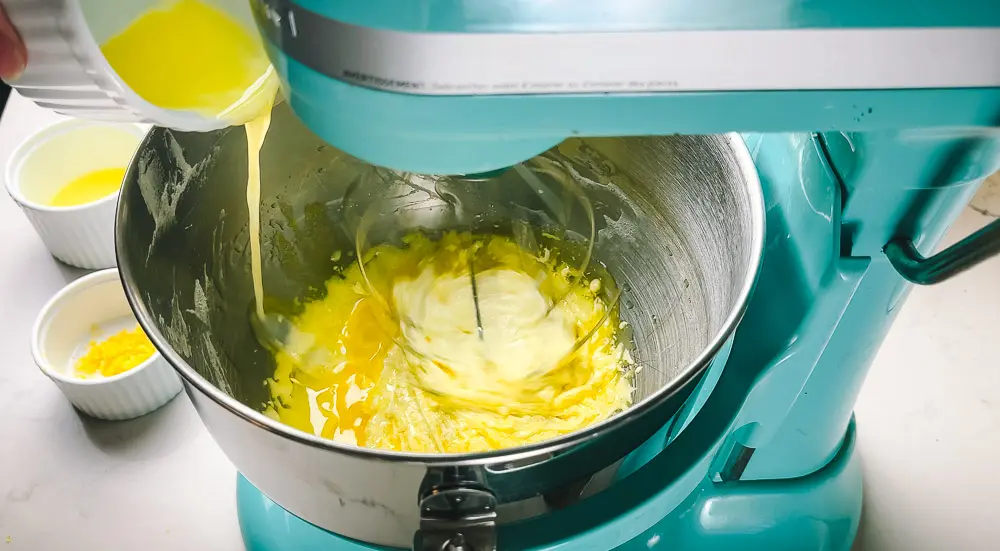
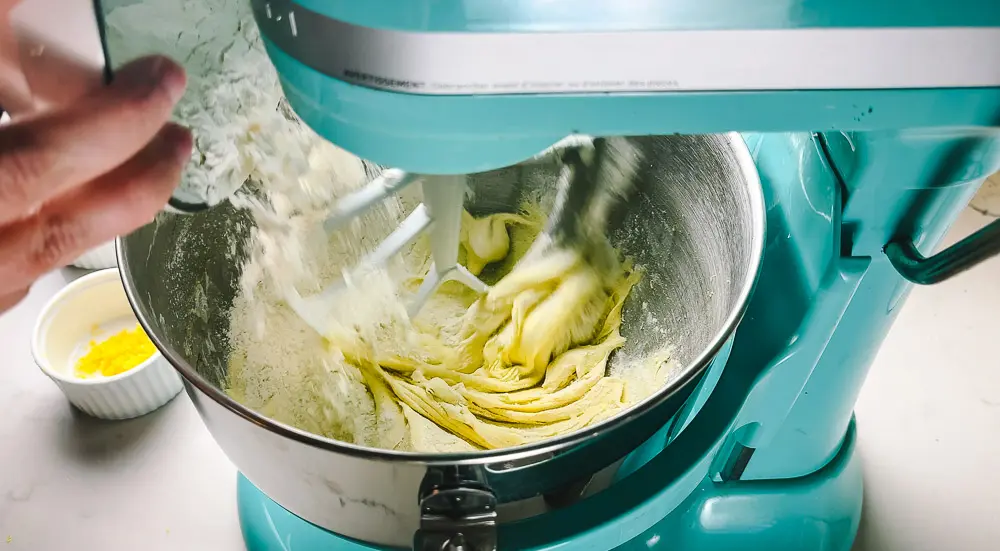
Add the lemon juice and lemon zest, then slowly drizzle in the milk, and beat until everything is well mixed together. Use a silicone spatula to scrape the sides and bottom of the bowl to make sure everything is well combined.
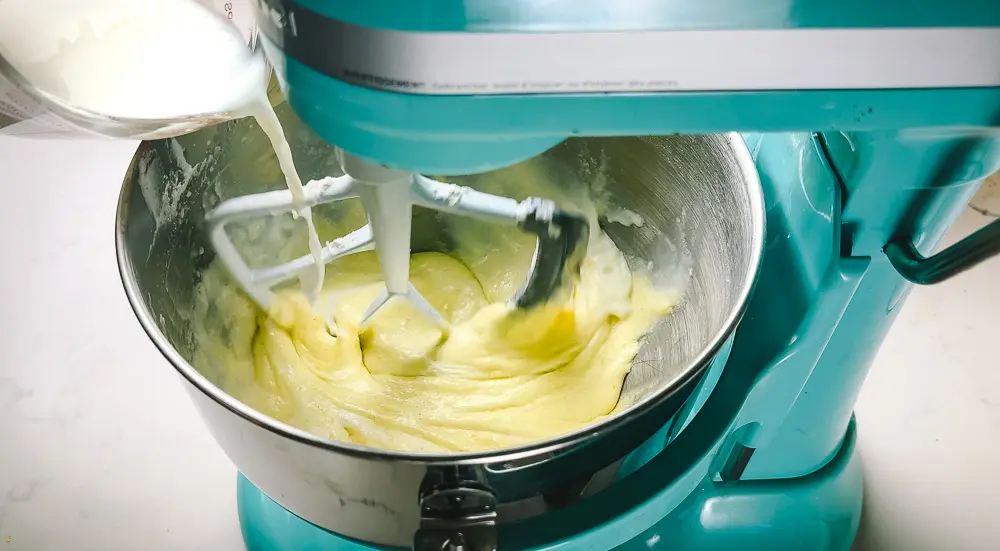
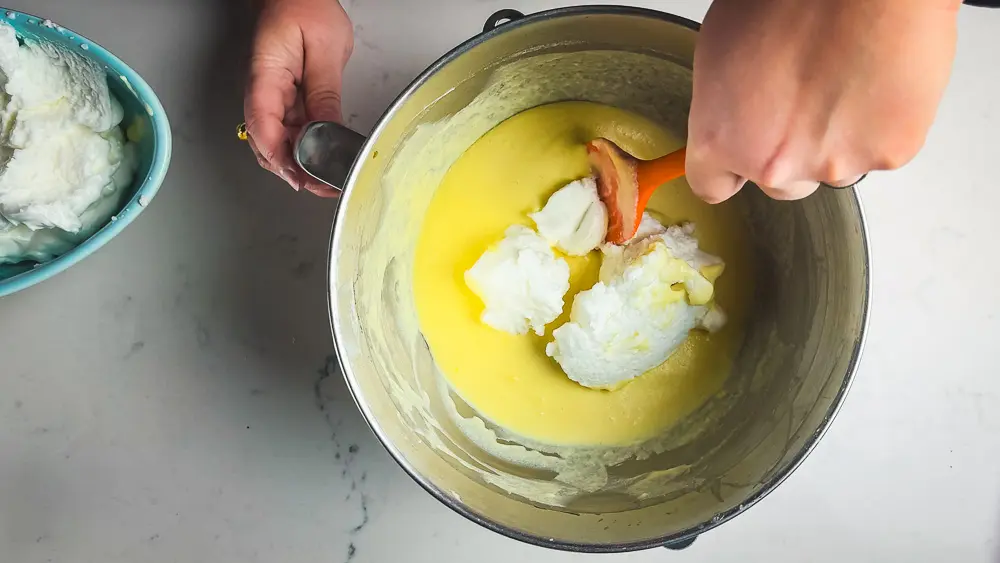
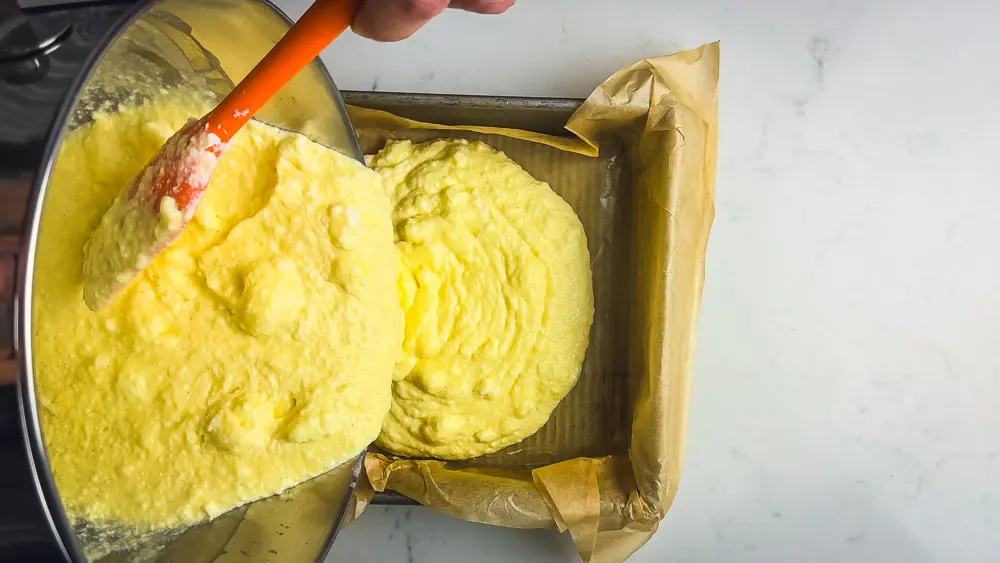
The next step you’ll need to do by hand, so remove the bowl from the mixer. Add a third of the reserved egg whites, and use the silicone spatula to fold them in. At this point, you’re really just trying to lighten the batter, so you don’t have to be too delicate here. Repeat twice more, folding more gently, until all egg whites are added. Do not over mix, a few streaks of white in the batter is fine.
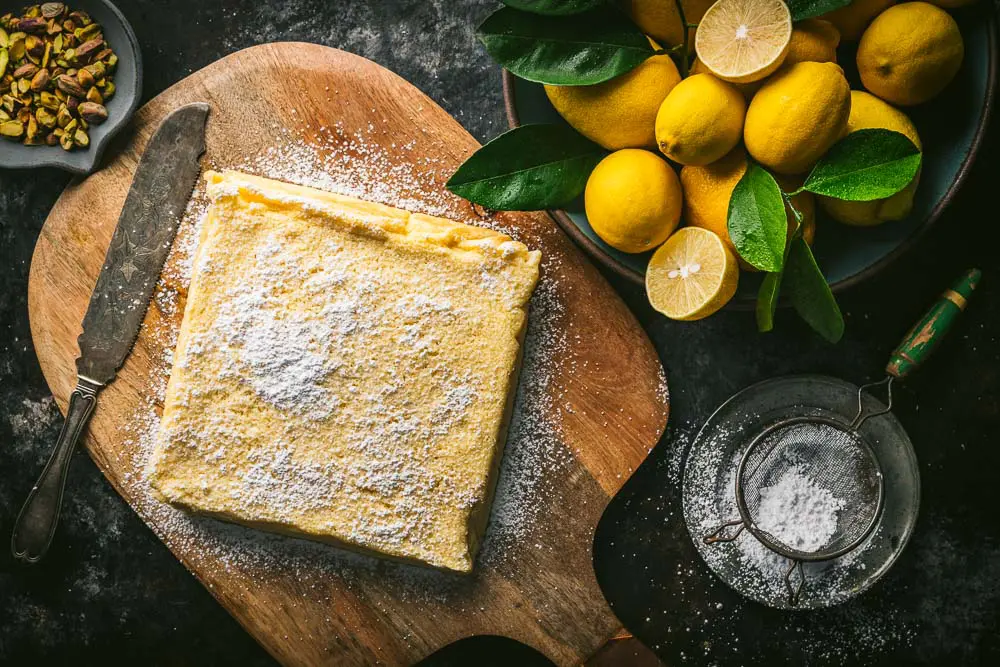
baking and serving
Pour the batter into the prepared baking dish, and bake for 45 to 55 minutes, until the top is just lightly golden, and the center jiggles just slightly when moved. Allow it to cool completely at room temperature, then cover the cake and refrigerate it for at least an hour, or even better, overnight. Cut it into squares and serve with a lemon slice garnish, if you like.
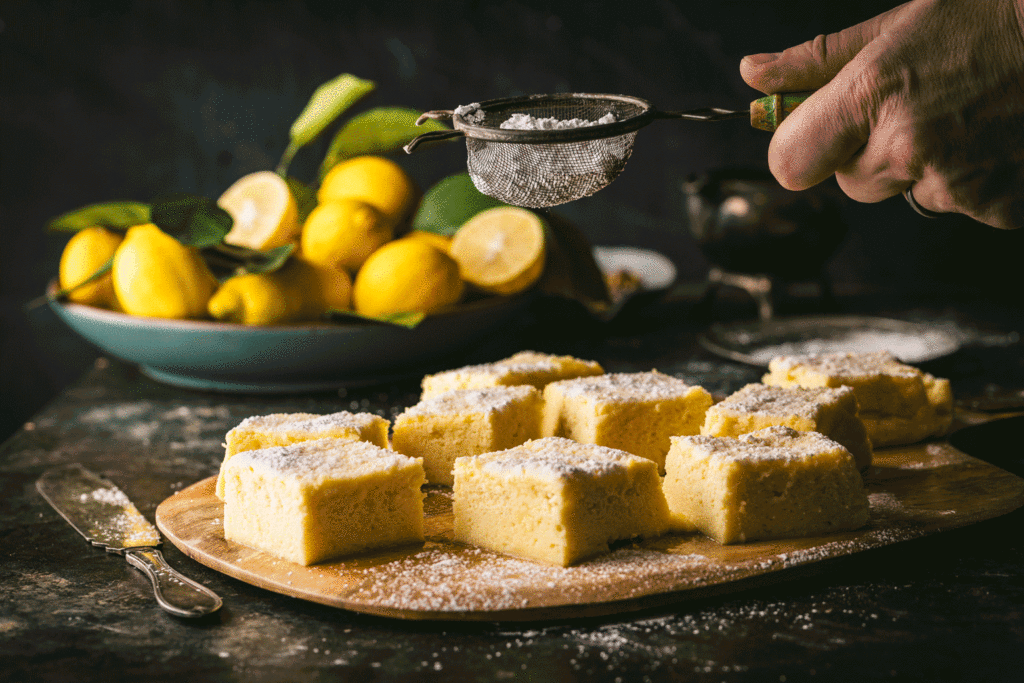
So there you have it. Magic lemon custard cake, and you didn’t even have to learn to juggle. Have a go at making them and let us know what you think!
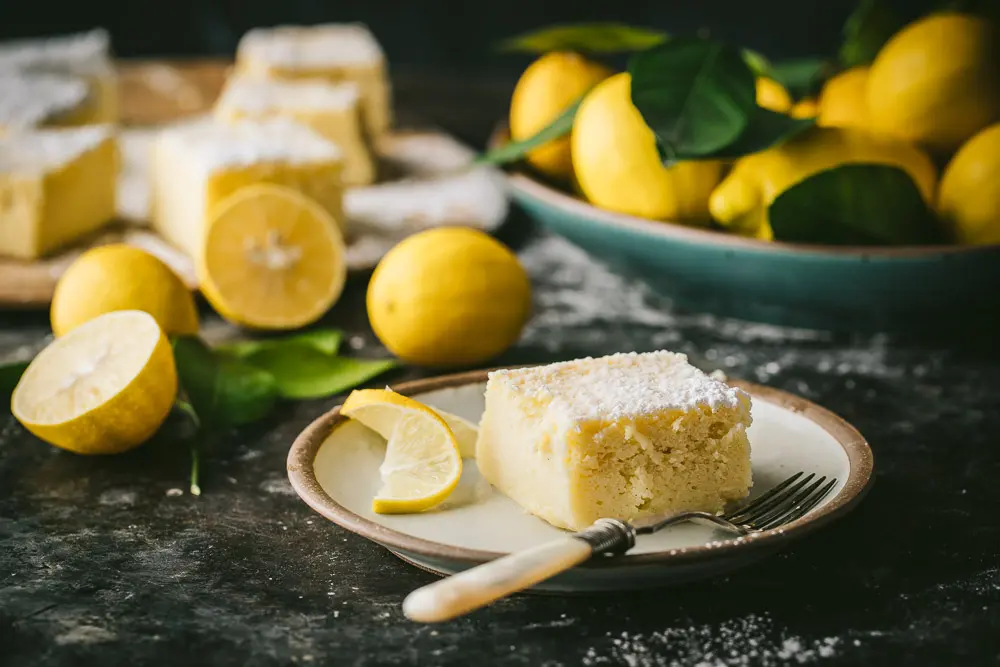
Magic Lemon Custard Cake
Equipment
- 1 8×8-inch baking pan, lined with parchment
- 1 Stand mixer or handheld beater Whisk and paddle attachments
Ingredients
- 4 large eggs room temperature
- 1/4 teaspoon cream of tartar optional
- 3/4 cup sugar
- 1/2 teaspoon kosher salt
- 1/2 cup unsalted butter melted and cooled (1 stick)
- 1 teaspoon vanilla paste or extract
- 3/4 cup all-purpose flour sifted
- 1/4 cup lemon juice from about 2 large lemons
- 2 tablespoons finely grated lemon zest from about 2 large lemons
- 1 3/4 cup whole milk room temperature
- Powdered sugar for dusting optional
Instructions
- Preheat oven to 325°F and set a rack in the middle. (165°C). Line an 8×8 inch baking dish with parchment paper.
- Separate eggs and add whites to the bowl of a stand mixer fitted with the whisk attachment (be careful not to get any yolks mixed in with the whites). Add cream of tartar and whisk on medium-high until whites form stiff peaks (about 3 to 5 minutes). Transfer whipped whites to a bowl and set aside.
- Add the yolks to the mixing bowl (no need to clean) and whisk on medium-high until yolks become foamy, about 1 minute. With the mixer running, drizzle in sugar and continue to whisk until yolks become creamy and lighten in color, about 2 to 3 minutes. Add salt, butter and vanilla extract and continue beating for another minute or two until well incorporated.
- Switch to the paddle attachment and add the flour and mix on medium-low until the batter is smooth and well combined. Add lemon juice and lemon zest then slowly add the milk and beat until everything is well mixed together. Use a silicone spatula to scrape the sides and bottom of the bowl to make sure everything is well combined.
- Remove the bowl from the mixer and add a third of the egg whites and use the silicone spatula to gently fold them in. Repeat twice more, until all the egg whites are added. Do not over mix, a few pockets of egg white in the batter is fine.
- Pour batter into prepared baking pan and bake for 45 to 55 minutes, until the top is lightly golden and the center jiggles just slightly when moved.
- Allow it to cool completely at room temperature after baking. Once cooled, cover the cake and refrigerate it for at least an hour, or even better, overnight. Remove from the pan and sprinkle generously with powdered sugar. Cut into 9 squares and serve cool or room temperature.
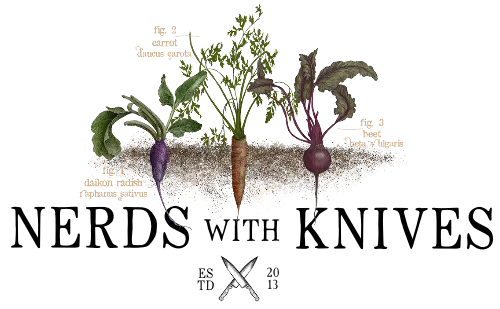
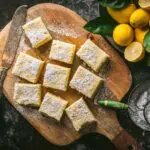
This is the third time I’ve baked this cake. My family love it!
Love this recipe. I made it my own by mixing everything but egg whites all at once. One time I stuck all of it but egg whites in a blender. No matter what, it comes out great. No special mixing required. I like the cake part at the bottom when serving and put more lemon zest on the top….no powdered sugar. Sooo refreshing!
So glad you like it!
I’m wanting to add blueberries to the recipe but I’m confused on when I should add them? I’ll take the risk my next round of baking
Got a bit of a fright because the milk curdled with the lemon juice but it still turned out perfectly. A beautiful recipe
Hi Leigh, so glad you liked the result! The same thing happens with lemon curd. It looks absolutely wretched at the beginning, but always turns out perfectly.